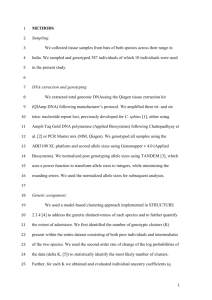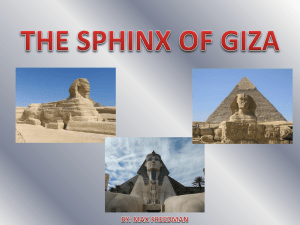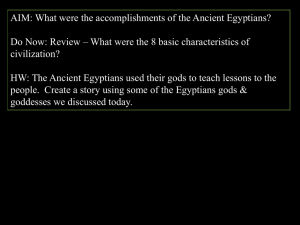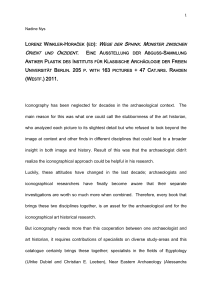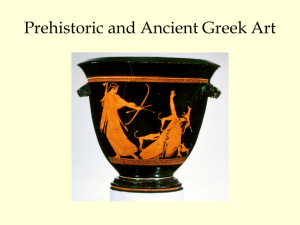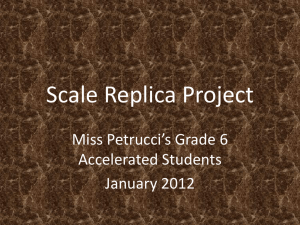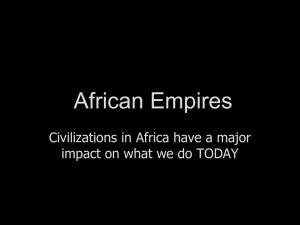HISTORY OF THE CONSERVATION OF THE SPHINX by Dr. Zahi
advertisement
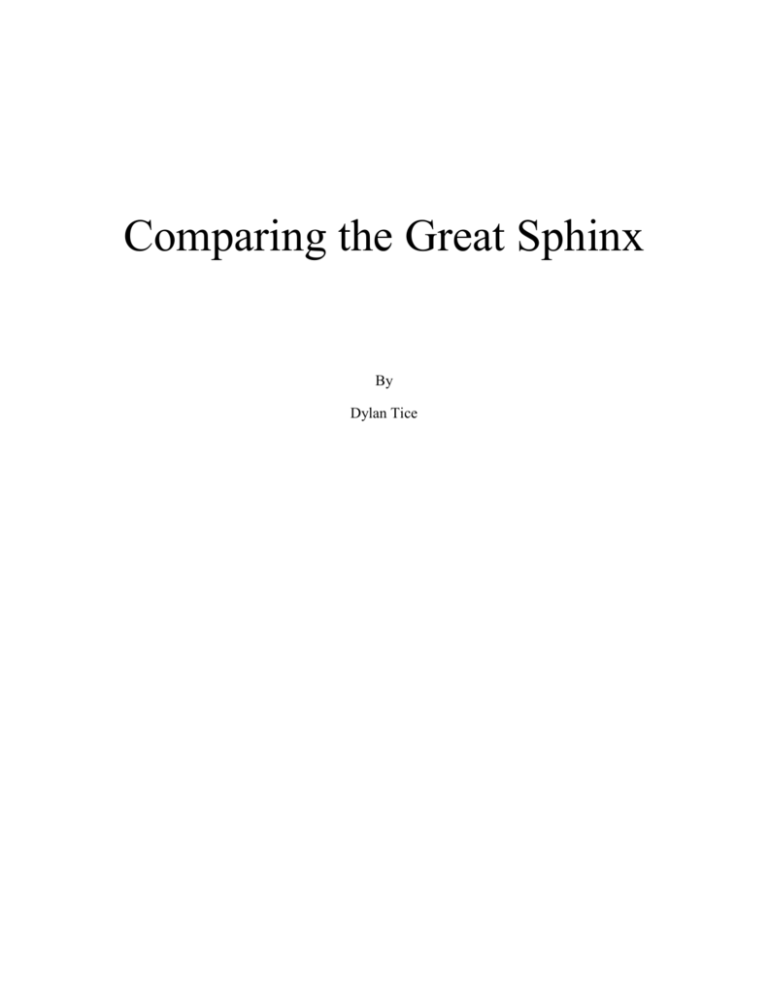
Comparing the Great Sphinx By Dylan Tice The Great Sphinx is one of the largest single stone carvings in the world. The sphinx has been known about throughout history, and has been visited by people throughout time. People like Greeks, Romans, Napoleon Bonaparte, and anyone who wants to take the trip. This site has been re excavated multiple times, groups of people. No one knows who built the sphinx but there are a few hypothesizes as to who built it. The sphinx has been known about for a long time. There is a story that Napoleon’s solders shot the nose off, (pic 1) but three hundred years before there is an Arabic historian that mentions the noise is gone." (Nova) The sphinx itself like the pyramids' is an icon of Egypt that has stood the test of time. The sphinx is considered one of the largest single stone carving. The upper body and head were carved out of a single stone. “The Sphinx itself is two hundred and forty feet long, and sixty-six feet tall." (Sacred sites) That is about the size of a football field and as tall as the white house. So you can only imagine how big the stone was before it was carved. The sphinx itself is made from limestone. Mark Lehner was on the first archeologist to study the sphinx in any great detail. He spent years scaling and mapping every stone. What he found was is that there are layers of hard and soft limestone. The layers of soft limestone are a yellowish color, where as the hard limestone layers are more of a gray color. The stratigraphy can also be seen in what is called “the weathering pattern" (nova, pic 2, 3) this pattern is caused by wind erosion and attacks the softer layers more than the harder ones. This pattern along with geological comparison to the walls of the ditch around the sphinx shows that this stone itself was dug out of the surrounding earth. Mark Lehner also found the same stratigraphy of hard and soft layers in a set of ruins of a temple right in front of the sphinx. This temple is called the sphinx temple. From pictures on pyramids' to other excavations done we know that the tools used to create the sphinx are the same tools used to make the pyramids'. The primary tools used were stone hammers, and copper chisels. One of the activities we did in class was to determining the color and the size of particulates in the soil sample. I think that would have been more than useful in deterring and defining the layers that comprise the Sphinx, and the surround areas Especially when they were trying to determine if the sides of the surrounding canyon walls were comprised of the same types of limestone as the sphinx. Takeing soil and core samples I think must be just as important without taking these samples there would be no way to compare the limestone from the areas of the temple and the ditch surrounding the sphinx. The reason for the debate over who was the original creator of the sphinx back during the Old Kingdom has to do with two different things. The first is if the Great Sphinx the shape of the face and the lack of a beard, some people suspect that the sphinx has the face of Pharaoh Kufu (the creator of the first pyramid of Giza and the largest) is because all known statues of Kufu don’t have a beard and their faces have similar shape and features. The other argument is that the Sphinx, sphinx temple axis, and Pharaoh Kaufri's pyramid al line up precisely; there is also an astrological significance to this as well. When the sun rise on the longest day of the year it runs along a line that goes through the sphinx, sphinx temple, and Kaufri's pyramid. Another technique that we learned about was triangulation. In class we used this to help us locate all of the holes we dug for the core samples that we took. I think that this was probably used in the scaleing and mapping of all the different types of stone blocks that make up the paws and other areas that show varies levels of restoration. But also the general mapping of the site itself, I think that this technique is one of the big reasons that we have been able to determin that there have been multipule restoration attempts. The Great Sphinx is one of the few monumental achievements that have stood the test of time. From the Romans, to Napoleon, and even today people have known about the sphinx and continue to travel to see it. If it wasn't for the ancient Egyptians amazing skill at stone carving that can be seen in not only the sphinx but in the pyramids' that stand behind it. As well as the groups of people that have re-excavated and restored it, are the reasons that the Great Sphinx has stood the test of time. References Nova, Riddles of the Sphinx, Mark Lehner, and. Dr Zahi Hawass HISTORY OF THE CONSERVATION OF THE SPHINX by Dr. Zahi Hawass http://www.guardians.net/hawass/sphinx2.htm Wikipedia http://en.wikipedia.org/wiki/Great_Sphinx_of_Giza#Restoration http://en.wikipedia.org/wiki/%C3%89mile_Baraize Sacred sites, places of peace and power http://sacredsites.com/africa/egypt/great_sphinx_facts.html

